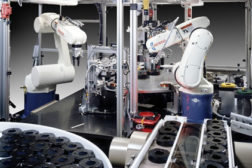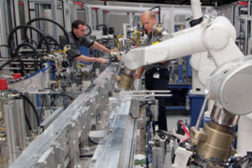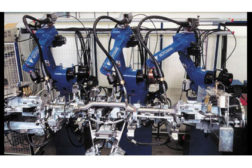Home » Keywords: » Robots
Items Tagged with 'Robots'
ARTICLES
EVENTS
Webinar Webinar
10/11/23 to 10/11/24
Contact: Meg K.
Optimizing Pick-And-Place With Cartesian Robots
Webinar Webinar
1/31/24 to 1/31/25
Contact: Meg K.
Manufacturing Investment 2023-2024: Looking Back, Looking Forward
Webinar Sponsor Webinar Sponsored Webinars
8/8/24 to 8/8/25
Contact: Meg K.
Fastening Technology Panel Discussion
Never miss the latest news and trends driving the manufacturing industry
Stay in the know on the latest assembly trends.
JOIN TODAY!Copyright ©2024. All Rights Reserved BNP Media.
Design, CMS, Hosting & Web Development :: ePublishing






















